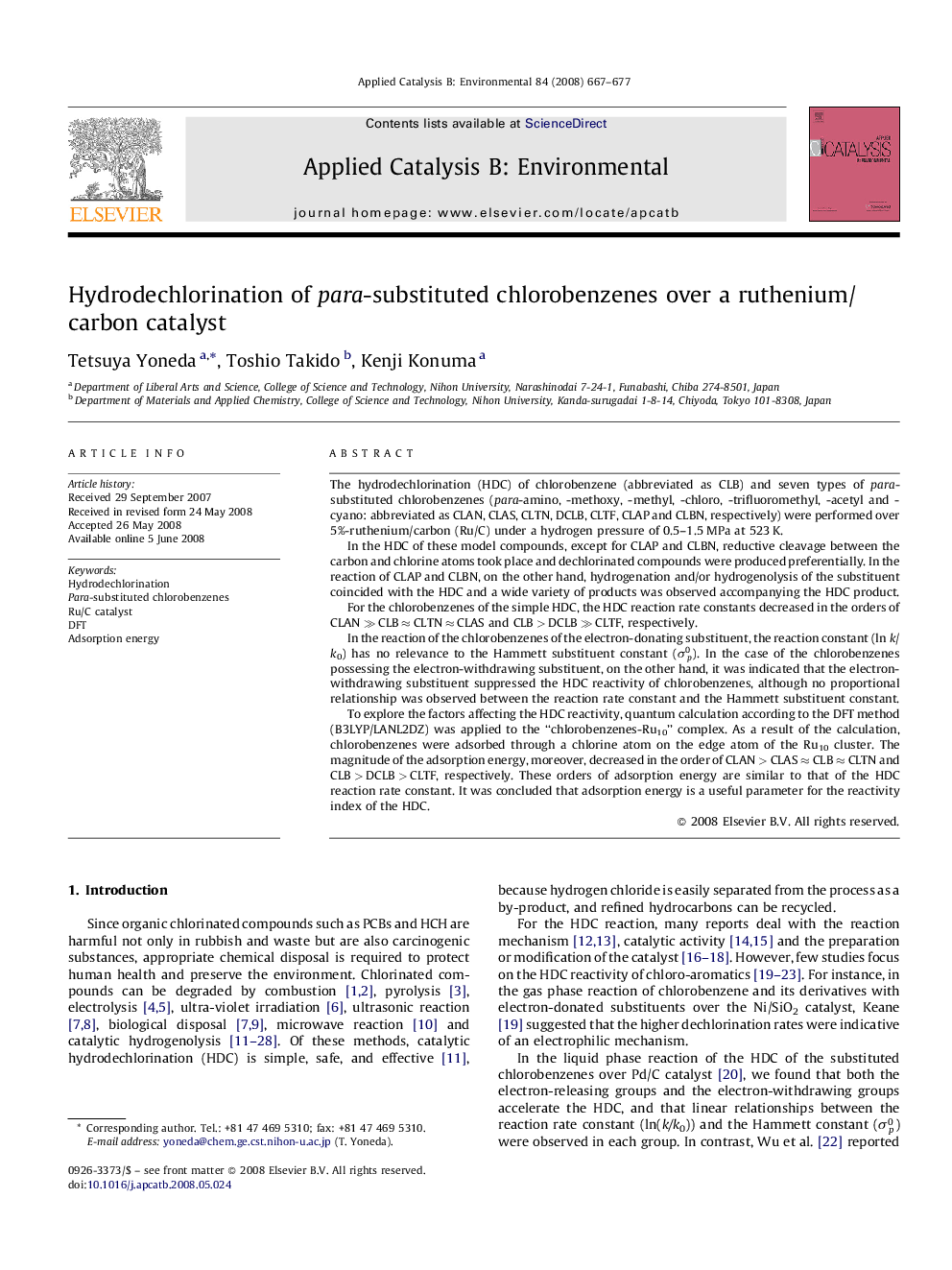| کد مقاله | کد نشریه | سال انتشار | مقاله انگلیسی | نسخه تمام متن |
|---|---|---|---|---|
| 48205 | 46496 | 2008 | 11 صفحه PDF | دانلود رایگان |

The hydrodechlorination (HDC) of chlorobenzene (abbreviated as CLB) and seven types of para-substituted chlorobenzenes (para-amino, -methoxy, -methyl, -chloro, -trifluoromethyl, -acetyl and -cyano: abbreviated as CLAN, CLAS, CLTN, DCLB, CLTF, CLAP and CLBN, respectively) were performed over 5%-ruthenium/carbon (Ru/C) under a hydrogen pressure of 0.5–1.5 MPa at 523 K.In the HDC of these model compounds, except for CLAP and CLBN, reductive cleavage between the carbon and chlorine atoms took place and dechlorinated compounds were produced preferentially. In the reaction of CLAP and CLBN, on the other hand, hydrogenation and/or hydrogenolysis of the substituent coincided with the HDC and a wide variety of products was observed accompanying the HDC product.For the chlorobenzenes of the simple HDC, the HDC reaction rate constants decreased in the orders of CLAN ≫ CLB ≈ CLTN ≈ CLAS and CLB > DCLB ≫ CLTF, respectively.In the reaction of the chlorobenzenes of the electron-donating substituent, the reaction constant (ln k/k0) has no relevance to the Hammett substituent constant (σp0). In the case of the chlorobenzenes possessing the electron-withdrawing substituent, on the other hand, it was indicated that the electron-withdrawing substituent suppressed the HDC reactivity of chlorobenzenes, although no proportional relationship was observed between the reaction rate constant and the Hammett substituent constant.To explore the factors affecting the HDC reactivity, quantum calculation according to the DFT method (B3LYP/LANL2DZ) was applied to the “chlorobenzenes-Ru10” complex. As a result of the calculation, chlorobenzenes were adsorbed through a chlorine atom on the edge atom of the Ru10 cluster. The magnitude of the adsorption energy, moreover, decreased in the order of CLAN > CLAS ≈ CLB ≈ CLTN and CLB > DCLB > CLTF, respectively. These orders of adsorption energy are similar to that of the HDC reaction rate constant. It was concluded that adsorption energy is a useful parameter for the reactivity index of the HDC.
Journal: Applied Catalysis B: Environmental - Volume 84, Issues 3–4, 1 December 2008, Pages 667–677